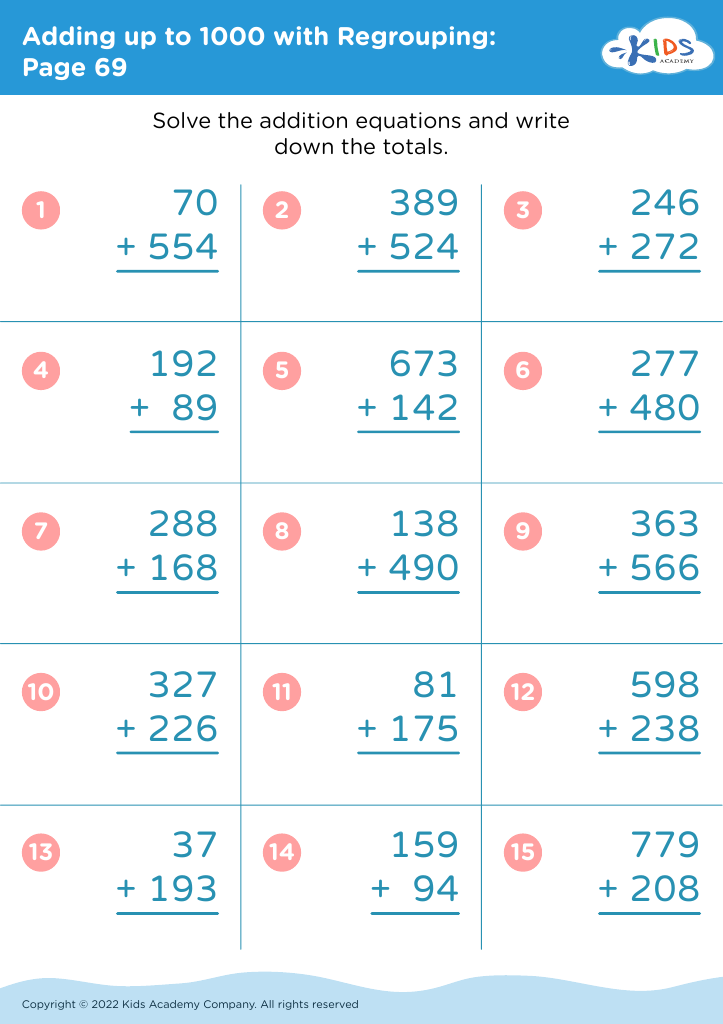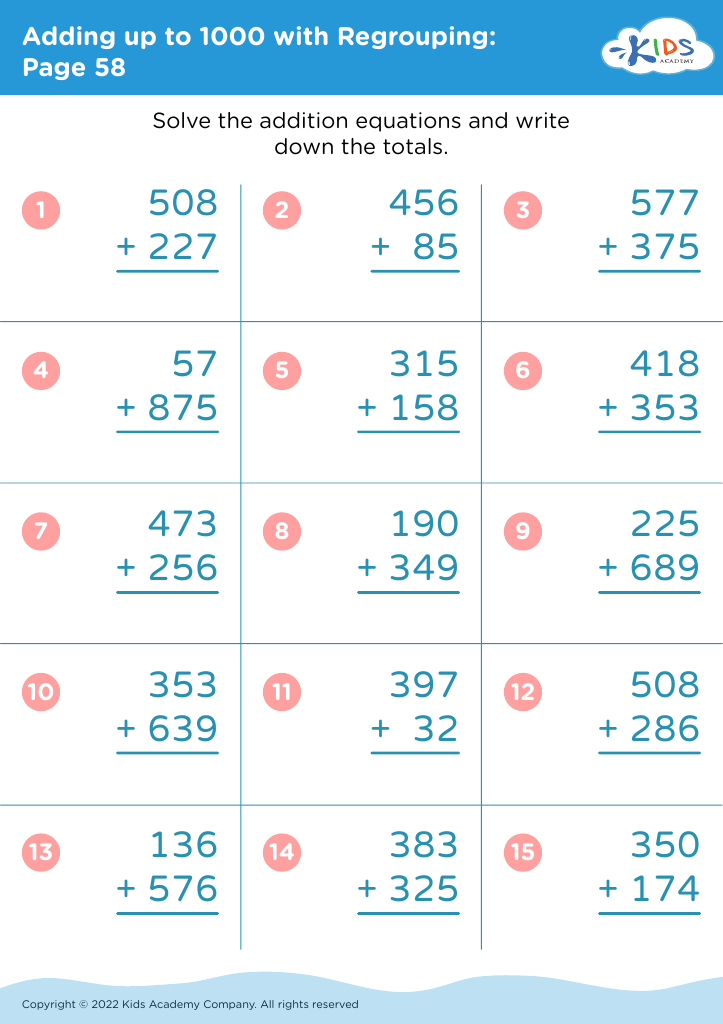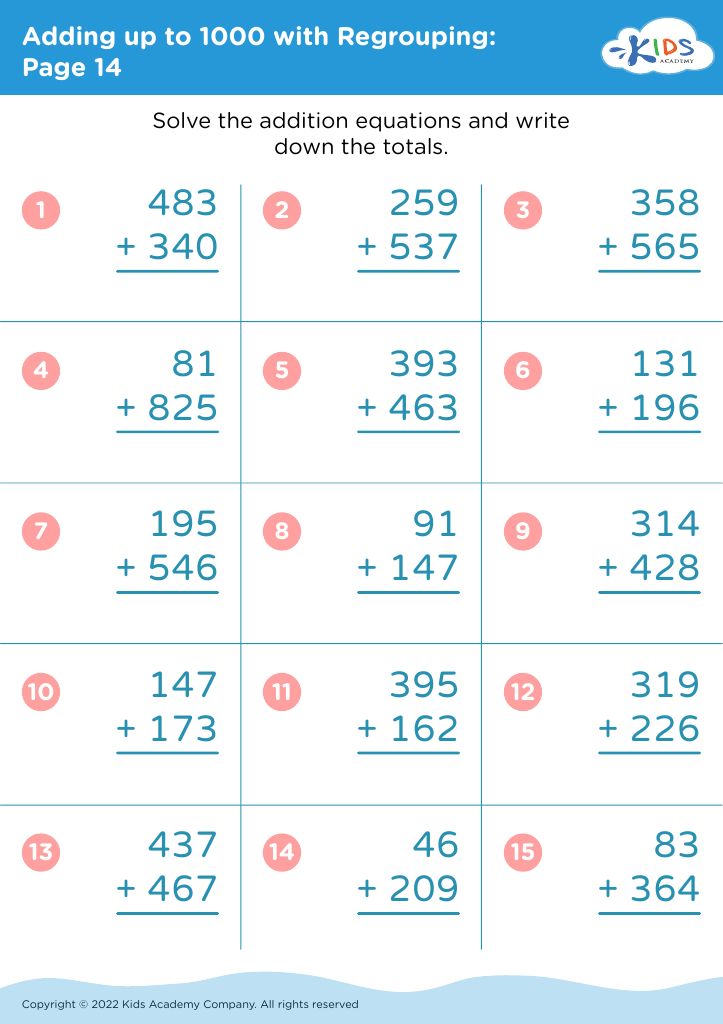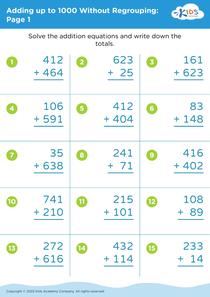Shape Recognition Adding up to 1000 with Regrouping Worksheets for Ages 8-9
6 filtered results
-
From - To
Enhance your child's math and shape recognition skills with our engaging “Shape Recognition Adding Up to 1000 with Regrouping Worksheets” specifically designed for ages 8-9. These worksheets combine fundamental arithmetic concepts with exciting shape recognition activities, helping children explore shapes while mastering addition up to 1000 with regrouping! Each worksheet is crafted to stimulate critical thinking, encouraging young learners to visualize math problems through geometric shapes. Our user-friendly layout and colorful designs make learning both fun and effective. Perfect for classroom use or at-home practice, these worksheets will build confidence and math prowess in your child. Download today and watch them thrive!
Shape recognition and the ability to add numbers up to 1000 with regrouping are fundamental skills that significantly enhance a child’s mathematical understanding. For parents and teachers, fostering these skills in children aged 8-9 is crucial for both cognitive development and real-life application.
First, shape recognition is essential as it helps children understand spatial relationships and develop critical thinking skills. Recognizing shapes lays the groundwork for geometry, enabling children to comprehend more complex concepts later, such as angles, area, and perimeter. This aids in daily tasks like reading maps or understanding architecture.
Second, mastering addition with regrouping equips children with the ability to perform more complicated mathematical operations. As they learn to regroup numbers, they will gain confidence in their numerical abilities, essential for daily activities, such as budgeting and measuring. These skills also contribute significantly to standardized testing, allowing students to excel in future math courses.
Incorporating both shape recognition and regrouping into everyday activities, like playing shape-based games or solving practical arithmetic problems, makes learning enjoyable and relatable. Encouraging these abilities at a young age reflects a commitment to lifelong learning and prepares children for more advanced math concepts, fostering a positive attitude towards the subject.





















